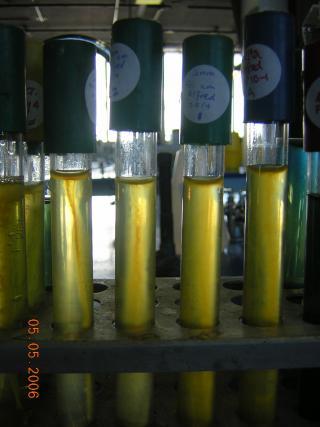|
Racist
bacterium
by
Scott Philip
A
Chinese, Indian, and Malay bacterium?
Alfred Tay spent his day in science comparing a bacterium
called Helicobacter
pylori isolated from individuals in a number
of nations around the world. This bacterium is found in the
human stomach and is responsible for causing infections, such
as ulcers.
His aim is find out whether particular populations of the
bacteria cause cancer. He does this by a process of sequence
analysis, using genes and DNA to catagorise and
arrange the different ‘types’ of this bacterium.
Since this bug lives exclusively in our stomach and has done
so throughout human history, the information gathered from
sequence analysis can and is being used as a marker of human
migration.
Currently, Alfred is a PhD student in Microbiology at UNSW.
A mixture of interest and chance led him to the field of molecular
biology and gene expression. However, since his parents worked
in the science industry dealing with scientific equipment
and technology, he has been dabbling with scientific things
before he could even spell ‘bacterium’!

This picture shows the results of the Hugh
and Leifson Test,
(a test used by some microbiologists to distriguish between
bacteria).
All of the tubes show signs of either anaerobic fermentation
or
aerobic activity and anaerobic fermentation together (facultative
anaerobe).
|
|